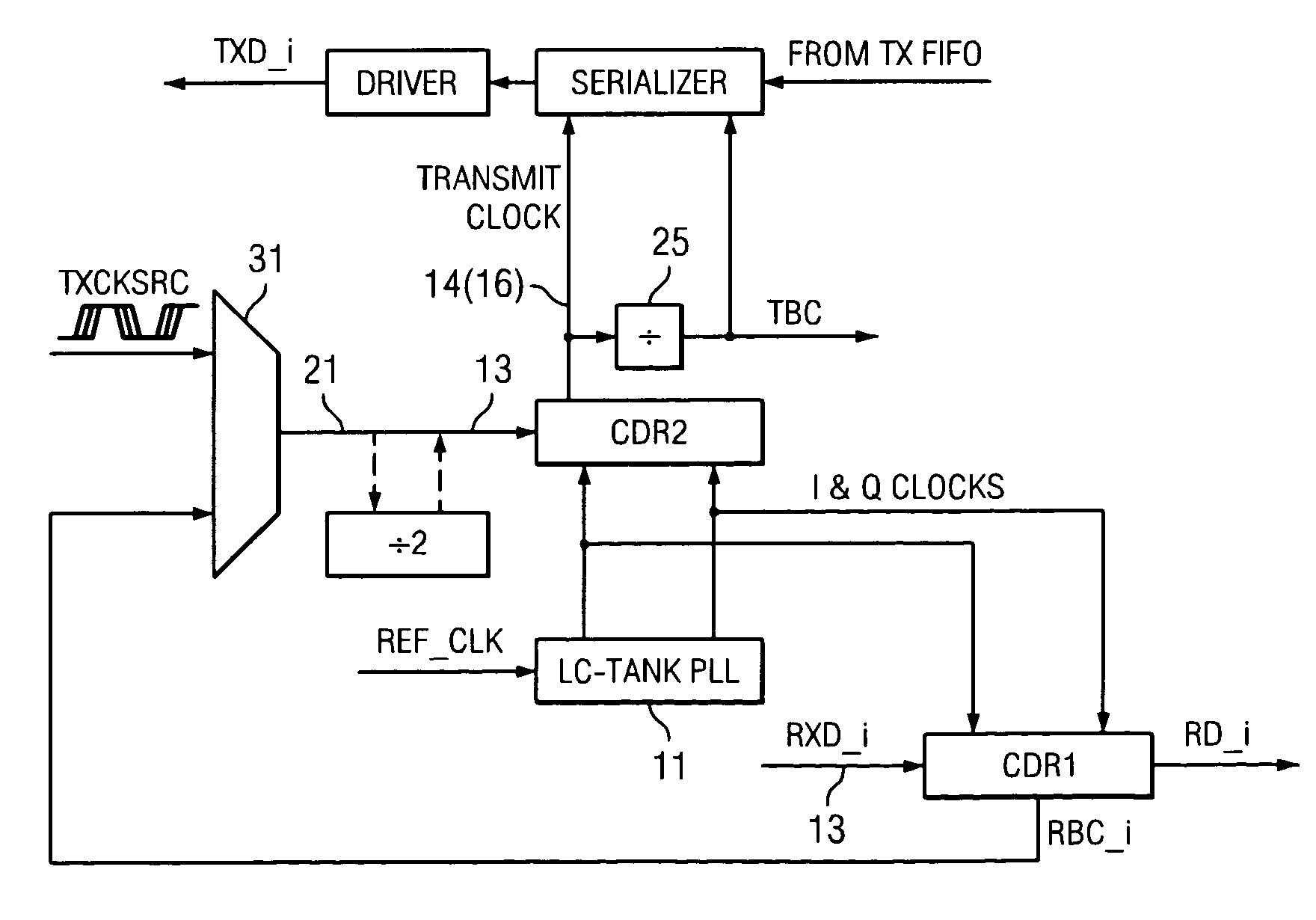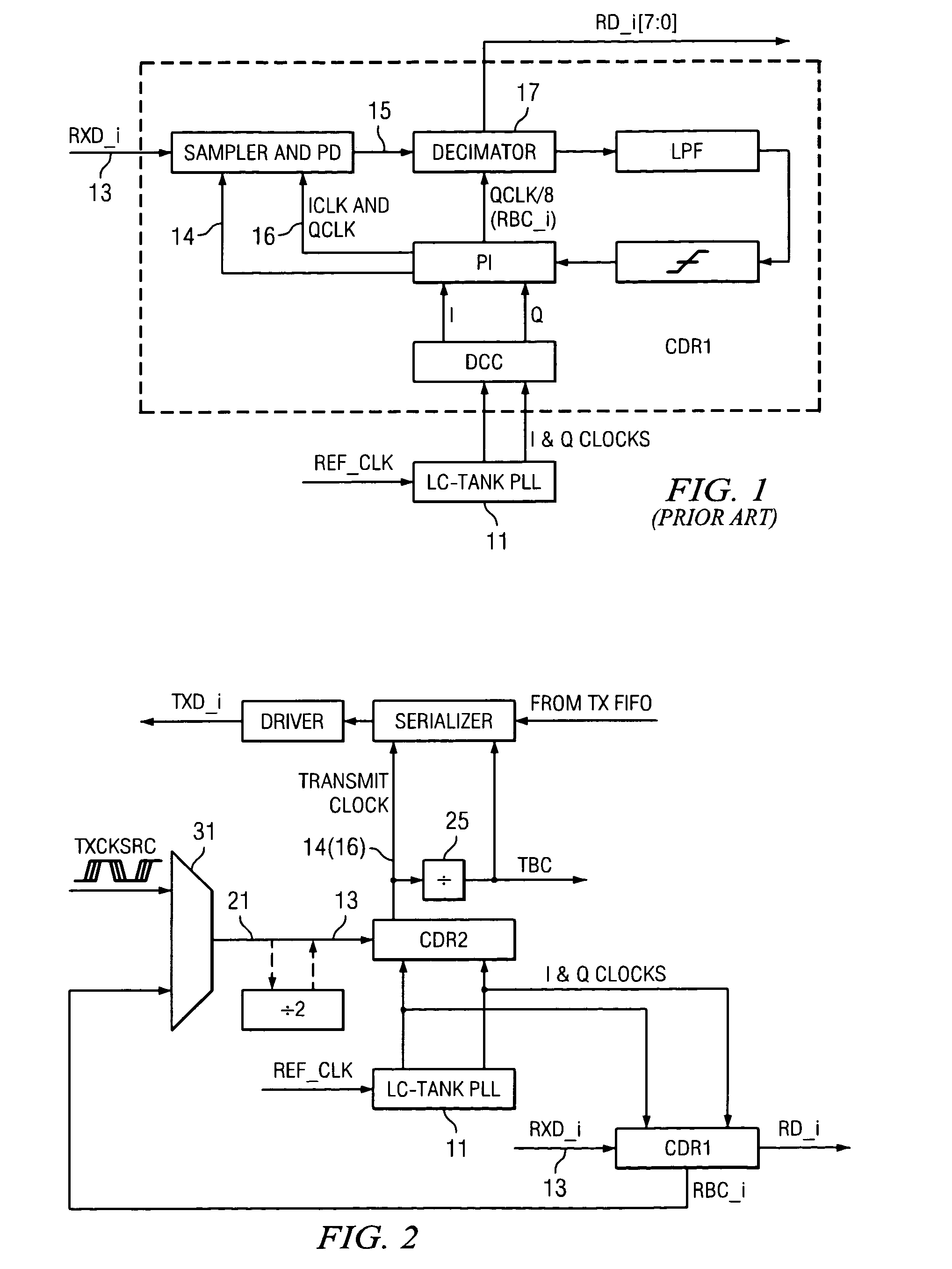CDR-based clock synthesis
a clock synthesis and clock technology, applied in the field of clock synthesis, can solve the problems of frequency pulling becoming more pronounced at higher integration levels, requiring additional components and associated costs,
- Summary
- Abstract
- Description
- Claims
- Application Information
AI Technical Summary
Benefits of technology
Problems solved by technology
Method used
Image
Examples
Embodiment Construction
[0010]A clock source can be thought of as a periodic data stream. Given a data rate of fD, a clock source with a frequency of fD / (2×n) can be thought of as a periodic data stream with a (100 / n) percent transition density. For example, clocks at frequencies of 1.25 GHz (n=1), 625 MHz (n=2), and 417 MHz (n=3) are all 2.5 Gb / s periodic data streams with respective transition densities of 100%, 50% and 33%.
[0011]Performing CDR on a clock input is equivalent to recovering its frequency while attenuating its noise content. Unlike random data, a clock has a fixed (i.e., generally constant over time) transition density, so the CDR circuit can use a lower bandwidth than would be required for random data, thereby permitting rejection of phase noise at lower frequencies.
[0012]FIG. 2 diagrammatically illustrates pertinent portions of exemplary embodiments of a serial data transceiver according to the invention. A noisy external clock source (TXCKSRC) can be applied (e.g., via selector 31) to an...
PUM
 Login to View More
Login to View More Abstract
Description
Claims
Application Information
 Login to View More
Login to View More - R&D
- Intellectual Property
- Life Sciences
- Materials
- Tech Scout
- Unparalleled Data Quality
- Higher Quality Content
- 60% Fewer Hallucinations
Browse by: Latest US Patents, China's latest patents, Technical Efficacy Thesaurus, Application Domain, Technology Topic, Popular Technical Reports.
© 2025 PatSnap. All rights reserved.Legal|Privacy policy|Modern Slavery Act Transparency Statement|Sitemap|About US| Contact US: help@patsnap.com


